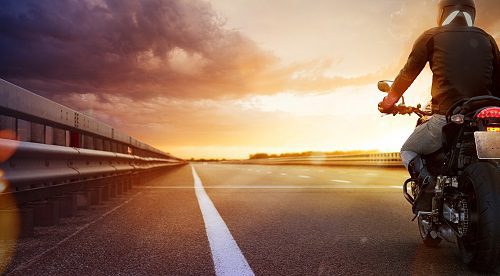
The Safety Risks of Riding a Motorcycle After Dark
 The Safety Risks of Riding a Motorcycle After Dark
The Safety Risks of Riding a Motorcycle After Dark
During the winter, the days are a lot shorter. What hours of daylight there are usually don’t allow you as much time to travel as you would like. However, there’s no reason that you can’t drive after dark, but you have to realize that safety risks are going to be a lot more pronounced after the sun goes down. This is particularly true for motorcyclists, who face higher safety risks all-around when compared to the standard vehicle operator.
You have every right to bike after dark. However, when doing so, you have to take more precautions and be more conservative with your driving habits than during the daytime. After the sun goes down, your chances of accidents go up, and you need to take extra steps to keep yourself safe.
The Risks of Biking After Dark
Riding a motorcycle is more dangerous than driving a car, in general. You are operating a vehicle with two wheels, a handlebar instead of a steering wheel, and must maintain balance in order to keep yourself upright. You also don’t have the protection offered by the frame of a full-sized car. Overall, bikers are more likely than the average driver to be involved in fatal accidents.
After dark, every driver’s or biker’s safety risks increase. The primary threat is visibility.
When the sun goes down, your field of vision narrows, and you rely on the lights of other vehicles, lights in the surrounding terrain, and your own vehicle’s light to help you navigate. However, no matter how powerful your bike’s lights might be, they still don’t provide the same field of vision as natural daylight.
Plus, as opposed to the average vehicle, most motorcycles have only one headlamp. Therefore, your own ability to see the conditions ahead of you will likely diminish. You might not know whether there is another vehicle, animal or other object blocking your way, and you simply cannot bike in the same manner as you would if you had nothing but clear skies and open road ahead.
To keep yourself safe, it helps to remember a few important tips:
-
Leave more distance between yourself and other vehicles than you would in daylight.
-
Make sure your headlamps, tail lights and signal lights all are still working.
-
Decrease your speed to a lower level than you would use when driving on the same stretch of roadway during daylight.
-
Leave extra time for braking, and make turns at lower speeds.
-
Do not attempt to do any tricks with your bike.
Of course, observe the same safety practices as you would every day, like wearing your helmet and using the appropriate hand signals to let drivers around you know your intentions. All in all, if you proceed with caution, you will still be able to enjoy your bike at all hours. It will just take a little more commitment.
